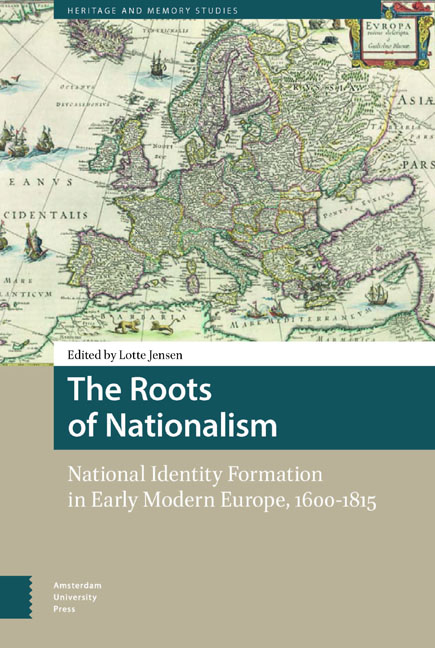Book contents
- Frontmatter
- Contents
- The Roots of Nationalism: Introduction
- Part One The Modernist Paradigm Contested
- Part Two The Genealogy of National Identity
- Part Three Negative Mirror Imaging
- Part Four Maps, Language and Canonisation
- Part Five Nation in the Age of Revolution
- List of Illustrations
- List of Contributors
- Index
11 - Comparing Ruins: National Trauma in Dutch Travel Accounts of the Seventeenth Century
Published online by Cambridge University Press: 03 February 2021
- Frontmatter
- Contents
- The Roots of Nationalism: Introduction
- Part One The Modernist Paradigm Contested
- Part Two The Genealogy of National Identity
- Part Three Negative Mirror Imaging
- Part Four Maps, Language and Canonisation
- Part Five Nation in the Age of Revolution
- List of Illustrations
- List of Contributors
- Index
Summary
In the morning of 10 May 1674, Coenraad Ruysch strolled along the walls of Groningen. Only a few days before, the Dutch traveller, a 23-year-old son of a well-off magistrate from Dordrecht, had embarked on a long and expensive Grand Tour through Europe, together with his cousin Dirck van Hoogeveen. During this first stage of his tour, Ruysch would cross the northern regions of the Republic, journey into Germany, and make a beeline south for the Alps and the long-awaited Italian cities beyond. Nearing the German border, Ruysch permitted himself a brief respite in Groningen. Despite the stormy weather, Ruysch spent the morning inspecting the city's ramparts:
Come rain or shine, our cloaks wrapped around our ears, we did not neglect to see that side of the city that was recently besieged by the bishop of Munster. We found little to no damage to the ramparts and the houses, but we remarked that they must have suffered nevertheless: the bricks – new ones next to old ones – seem to have been repaired.
Although the appraisal of a city's fortification was not an uncommon topic in travel accounts, Ruysch's interest went further than mere bulwarks and siege weapons: wrapped tightly in his cloak, he came to inspect the scars from the harm the city had endured two years previously. In 1672, the infamous Disaster Year, the Dutch Republic suffered a threefold attack by enemy troops from England, France and the German dioceses of Cologne and Munster. The bishop and marshal of the latter, Christoph Bernard von Galen (1606-78), besieged Groningen and damaged parts of the southern walls. While the attack lasted for only a month, Ruysch found that the walls of Groningen still bore its marks in the form of pell-mell patchwork of old and restored bricks.
As discussed later on in this article, the Disaster Year had a large impact on Dutch memory, leaving a multitude of poems, pamphlets and horrific engravings in its wake. Ruysch's excursion along the city ramparts can be seen as a close and personal encounter with the not-so-distant past. Using his travelogue and notes on 1672 as a vivid case study, this article investigates the role of national trauma in a Dutch travel account of the seventeenth century.
- Type
- Chapter
- Information
- The Roots of NationalismNational Identity Formation in Early Modern Europe, 1600–1815, pp. 217 - 232Publisher: Amsterdam University PressPrint publication year: 2016

